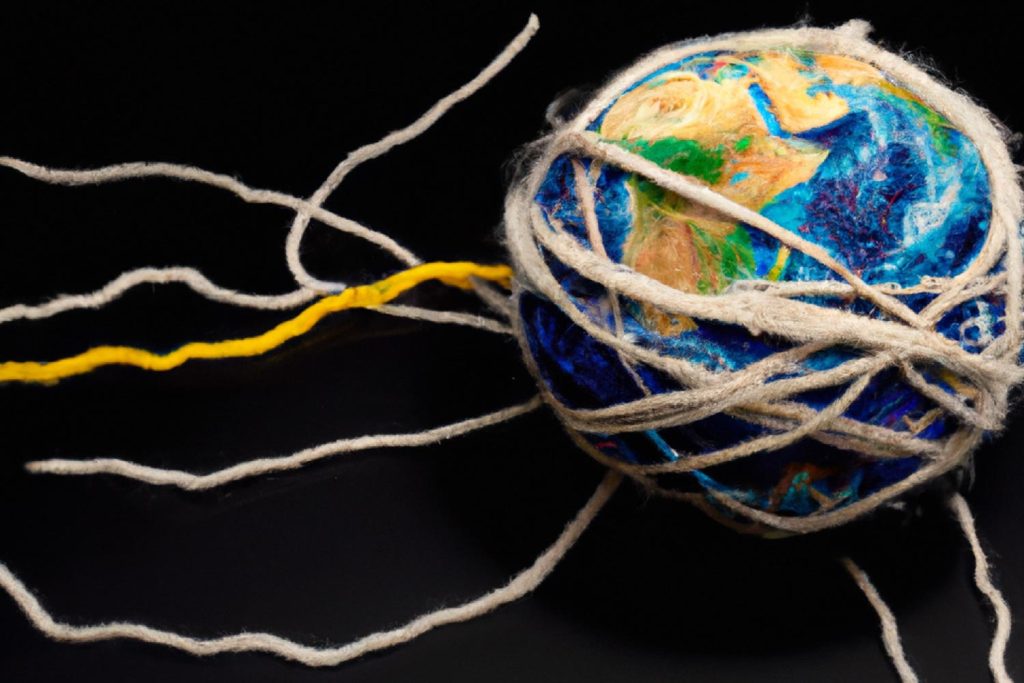Earth’s Polycrisis Is No Mere Illusion
Thomas Homer-Dixon, Michael Lawrence, and Scott Janzwood
Globe and Mail
The backlash against the “polycrisis” neologism is well under way.
The term was popularized last year by Columbia University economic historian Adam Tooze. Its use has exploded recently among global policy elites, most notably at last month’s meeting of the World Economic Forum in Davos, Switzerland, where it served as a handy label for the entangled mess of crises affecting our world – including war, pandemic, rampant inflation, energy shortages, climate extremes and surging migrations.
For most users, that’s where the idea ends. It’s just a trendy alternative to the dated term “perfect storm,” and both simply mean humanity is encountering a string of bad luck.
So perhaps skepticism was inevitable. Historian Niall Ferguson told a Davos audience that there’s no such thing as a polycrisis: It’s an “illusion,” he declared. And Gideon Rachman, the chief foreign affairs columnist of the Financial Times, derided the term as a cliché: “Does it actually mean anything?” he tweeted from the same conference. “Other than – ‘there’s lots of bad stuff happening simultaneously and one thing can affect another.’”
But polycrisis can and should mean much more. Our research team at the Cascade Institute has been studying the underlying mechanisms driving today’s converging crises for years. We argue that polycrisis is the most accessible label to capture the novel and decidedly real danger humanity now faces.
True, global crises have sometimes converged in the past – as they did with the energy-economic shocks of the 1970s. Yet today’s situation is both quantitatively and qualitatively different. Now our crises are more numerous and diverse, and they’re producing far greater harm together than the sum of harms they’d produce in isolation.
Today’s crises simultaneously span natural, political, economic and technological systems, because they’re driven by a multiplicity of underlying “systemic risks,” from climate heating and zoonotic viral disease (disease transmitted from animals to humans) to economic insecurity, ideological extremism and geopolitical tensions. Most of these risks are not only worse than they were one or two decades ago, they’re also getting worse faster, while the crises they’re generating are happening more often simultaneously.
Put simply, today’s global risks are amplifying, accelerating and synchronizing.
Take climate heating, for example. In 2000, the average global surface temperature was about 0.75 C higher than the 1880-1920 average; now it’s about 1.2 C higher. At the same time, the warming rate is surging upward, from about 0.18 C per decade between 1970 and 2010, to a predicted 0.27 C from 2010 to 2040 – a rise of 50 per cent.
Likewise, outbreaks of zoonotic disease are worsening on average, and they’re happening more often. Since HIV first appeared four decades ago, we’ve seen the SARS outbreak in 2002, H1N1 in 2009, MERS in 2012, Ebola in 2014, Zika in 2015, Ebola again in 2018, COVID-19 in 2019 and, most recently, monkeypox and Marburg virus.
And, finally, because warming is making such disease outbreaks more likely, these two seemingly discrete phenomena in the coming decades will increasingly generate crises – calamitous weather and pandemics – in synchronicity with each other.
Polycrisis skeptics argue that humanity’s current situation isn’t really new – that the disruptions we’re experiencing are just “history happening,” as Mr. Ferguson said in Davos. Hardly: Our species has never faced this kind of situation before.
For instance, we’ve never before significantly reduced the atmosphere’s transparency to infrared radiation by massively changing planetary flows of carbon and nitrogen. But now we have, and the resulting energy imbalance at Earth’s surface (more heat coming in from space than going out) is estimated at 0.9 watts per square metre. Added up across the planet’s entire surface, that’s the energy we’d release if we exploded 600,000 Hiroshima-sized bombs in the atmosphere every day.
This huge injection of extra energy is supercharging storms, droughts and heat waves – extreme events that are then generating cascading, synchronized damage to our infrastructure and food systems, forest resources and physical health. The worldwide cost is already in the trillions of dollars and escalating fast. These effects aren’t an illusion.
Historians like Mr. Ferguson tend to emphasize historical continuity over change. They often argue that every generation thinks the world is falling apart, but then ultimately pulls through. Today, though, the past isn’t a good guide to our present and future. Too many basic parameters – such as the energy imbalance at Earth’s surface – have changed. At the same time, we’re seeing new, deep links among crises that include synchronizing dynamics. The simple extrapolation of past trends doesn’t work any more.
The debate around the term polycrisis boils down to whether we really understand the nature of the mess we’re in. And clearly, we don’t. Scientists, commentators and policy makers still address the world’s crises mainly from inside their disciplinary and institutional silos, which means they generally can’t see why and how the world’s crises have become so entangled.
The novelty of humanity’s predicament demands novelty in our thinking as well. The polycrisis idea can motivate urgent scientific investigation into the architecture of global crisis interaction. If we’re going to have a clue about how we can address humanity’s intensifying challenges – as an integrated, compounding system of crises, rather than as discrete problems – we need to figure out why and how they’re becoming entangled.
Dismissing the polycrisis as an illusion will only help make its ultimate effects immeasurably worse. In the end, reality always bites.

Topics
Climate Change
Complexity
Societal Collapse